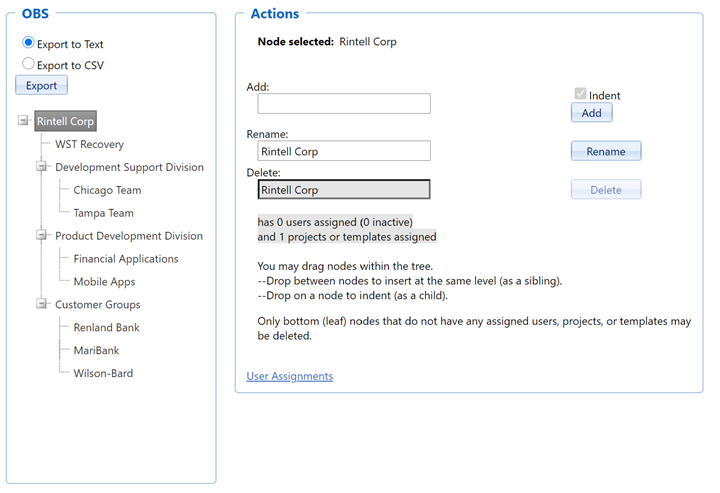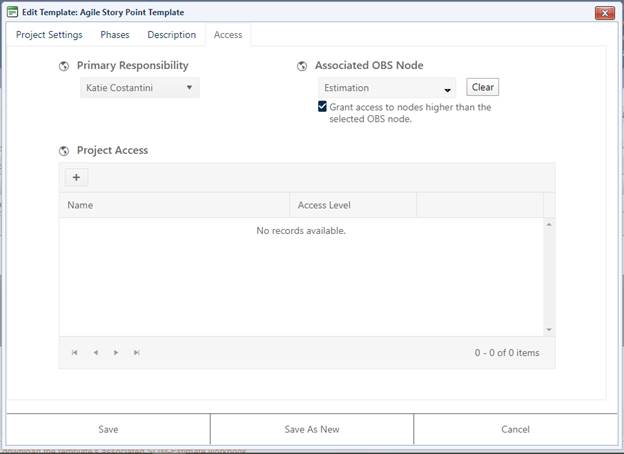
Let’s look at a sample OBS. The OBS list shown below has four lower level (child) nodes located under the top level (root) node. One of these child nodes (WST Recovery) has no lower-level nodes beneath it. The other three (Development Support Division, Product Development Division, and Customer Groups) have one or more child nodes below them.

Once you have added one or more nodes to your OBS, your SLIM-Collaborate Back Office administrator(s) or any user with sufficient permissions can control access to individual project records by assigning an OBS node to the project via the Access tab of the project or template settings (see screen snap below).

For more detailed information about project or template access settings, see the Access tab topic of this user guide.